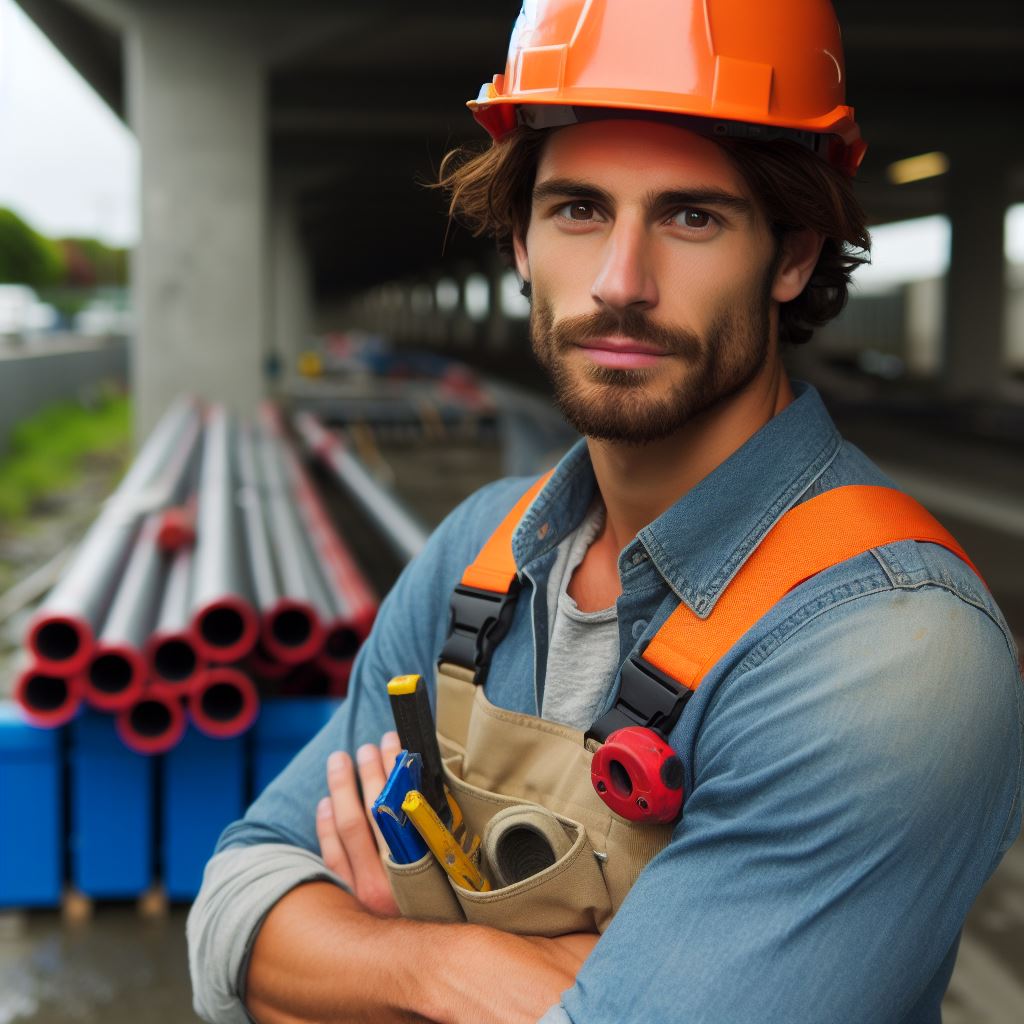Introduction
Energy-efficient buildings, also known as green buildings, are structures designed to minimize environmental impact.
They utilize sustainable materials, efficient energy systems, and optimal insulation to reduce energy consumption.
These buildings bring numerous benefits to Australia, including cost savings, improved indoor comfort, and lower greenhouse gas emissions.
Australia has made significant progress in promoting energy-efficient buildings, with policies and initiatives in place to encourage their development.
The government has set targets for zero-energy homes and is actively implementing energy-efficient building codes and regulations.
The state of energy-efficient building in Australia is quite promising, with a growing number of these structures being constructed across the country.
Green building practices and technologies, such as solar panels, rainwater harvesting systems, and high-performance insulation, are becoming more prevalent.
Various organizations and professionals are actively promoting and advocating for energy-efficient buildings in Australia.
The country’s commitment to sustainability and renewable energy has further fueled the drive towards energy-efficient buildings.
Therefore, energy-efficient buildings play a significant role in Australia’s efforts to combat climate change and reduce energy consumption.
The current state of energy-efficient building in Australia is on a positive trajectory, with increasing awareness and adoption of green building practices.
However, continued efforts and support from government, industry professionals, and individuals are crucial to further accelerate the transition towards energy-efficient buildings in the country.
Benefits of Energy-Efficient Buildings
Energy-efficient buildings have numerous benefits. One major advantage is reduced energy consumption, resulting in lower costs.
Additionally, these buildings offer improved indoor environment quality. Another benefit is the reduction of carbon emissions.
A. Reduced energy consumption and costs
Reduced energy consumption and costs are significant benefits of energy-efficient buildings.
By implementing energy-saving strategies, such as insulation and efficient appliances, these buildings consume less energy.
Consequently, this leads to lower utility bills for building owners and tenants.
The cost savings extend over the long term, making energy-efficient buildings financially advantageous.
B. Improved indoor environment quality
Improved indoor environment quality is another advantage. Energy-efficient buildings prioritize the occupants’ comfort, health, and well-being.
They enhance air quality by utilizing advanced ventilation systems that filter out pollutants and control humidity.
Moreover, natural lighting and access to outdoor views are incorporated, positively influencing occupants’ productivity, mood, and overall satisfaction.
C. Reduced carbon emissions
Energy-efficient buildings cut carbon emissions by using strategies like efficient HVAC systems and incorporating renewable energy sources.
They contribute to sustainability by reducing reliance on traditional energy sources, conserving natural resources, and easing strain on the power grid.
Improving indoor air quality and providing access to outdoor spaces in these buildings enhances public health, reducing respiratory issues and promoting well-being.
Economically, energy-efficient buildings generate demand for green jobs, driving innovation in sustainable construction, energy auditing, and renewable energy installation.
They boast higher property values and a competitive edge in the real estate market, appealing to environmentally conscious buyers and renters.
Government incentives and certifications, like Australia’s Green Star and NABERS, support and promote energy-efficient practices in construction.
In summary, energy-efficient buildings offer benefits such as reduced energy consumption and costs, improved indoor quality, lower carbon emissions, sustainability contributions, public health promotion, economic growth stimulation, and higher property values, making them crucial for a sustainable future.
Your Personalized Career Strategy
Unlock your potential with tailored career consulting. Get clear, actionable steps designed for your success. Start now!
Get StartedEnergy-Efficient Building in Australia Today
A. Overview of the National Construction Code
The National Construction Code (NCC) in Australia sets out the minimum requirements for the design, construction, and performance of buildings.
It covers various aspects, including energy efficiency.
The NCC is a performance-based code that aims to improve the environmental performance of buildings while ensuring occupant safety and comfort.
The code is regularly updated to align with advancements in technology and changing environmental challenges.
It consists of three volumes: Volume One covers residential buildings, Volume Two covers commercial buildings, and Volume Three covers plumbing and drainage.
B. Energy Efficiency Requirements
The NCC includes specific energy efficiency requirements that must be adhered to when designing and constructing buildings in Australia.
One notable requirement is the inclusion of the Building Fabric provisions, which focus on the thermal performance of the building envelope.
This ensures that insulation levels and air leakage are minimized, reducing the need for heating and cooling.
The NCC also requires efficient lighting, such as the use of energy-saving LED lights.
Additionally, there are regulations for efficient heating, ventilation, and air conditioning (HVAC) systems to reduce energy consumption.
Another important requirement is the mandatory incorporation of renewable energy sources or provisions for their future installation, such as solar panels or rainwater harvesting systems.
Furthermore, the NCC promotes the use of sustainable materials and construction practices, including efficient water use and waste management.
C. Examples of Energy-Efficient Building Certifications
In addition to the NCC, there are various energy-efficient building certifications available in Australia.
- Green Star: This certification, managed by the Green Building Council of Australia, evaluates the environmental performance of buildings across categories such as energy, water, materials, and indoor environmental quality.
- NABERS: The National Australian Built Environment Rating System provides ratings for energy efficiency, water usage, and other sustainability aspects of buildings. It helps owners and tenants assess and improve their building’s impact on the environment.
- Passive House: This international standard focuses on achieving high levels of energy efficiency and comfort through effective insulation, airtightness, and mechanical ventilation. It ensures buildings have minimal heating and cooling requirements.
- Livable Housing Australia: This certification promotes accessibility and adaptability in buildings, considering the needs of people with disabilities or mobility challenges. It ensures energy-efficient design and construction principles are integrated.
- Energy Rating: The Nationwide House Energy Rating Scheme (NatHERS) provides an energy rating for residential buildings based on their thermal performance. It helps homeowners and buyers understand the energy efficiency of the property.
These certifications provide recognition for energy-efficient buildings and assist in creating sustainable built environments throughout Australia.
Stand Out with a Resume That Gets Results
Your career is worth more than a generic template. Let us craft a resume and cover letter that showcase your unique strengths and help you secure that dream job.
Get HiredIn fact, energy-efficient building regulations and standards in Australia, as defined by the NCC, play a crucial role in promoting sustainability and reducing energy consumption.
Adhering to these requirements and seeking additional certifications can lead to more environmentally friendly and cost-effective buildings. Embracing energy efficiency in the construction industry is vital for a greener future.
Read: Challenges Facing Aussie Plumbers Today
Challenges in Implementing Energy-Efficient Building Practices
Energy-efficient building practices play a crucial role in Australia’s efforts to combat climate change and reduce carbon emissions.
However, the implementation of these practices faces several challenges.
A. High upfront costs
One of the primary obstacles to adopting energy-efficient building practices is the high upfront costs involved.
Constructing energy-efficient buildings often requires specialized materials and equipment, which can be costly to obtain and install.
Additionally, implementing energy-efficient technologies, such as solar panels or high-performance insulation, can require significant investments.
Many individuals or organizations may be hesitant to incur these initial expenses, despite the long-term cost savings and environmental benefits.
B. Lack of awareness and knowledge
Another challenge in promoting energy-efficient building practices is the lack of awareness and knowledge among stakeholders.
Many people are unaware of the potential benefits of energy-efficient buildings or how to integrate these practices into their construction projects.
This lack of awareness can lead to the continued construction of inefficient buildings that consume excessive energy and contribute to environmental degradation.
To address this issue, it is crucial to educate the public, architects, builders, and policymakers about the importance of energy-efficient building practices and the various strategies available.
C. Resistance to change
Resistance to change is another significant barrier to implementing energy-efficient building practices.
Traditional construction methods and materials may be deeply ingrained, making it difficult to convince stakeholders to adopt new approaches.
Additionally, resistance may stem from a fear of the unknown, as energy-efficient technologies and practices may be perceived as untested or unreliable.
Overcoming this resistance requires effective communication, demonstration of successful case studies, and providing incentives to encourage the adoption of energy-efficient building practices.
To address these challenges, it is essential to develop strategies that incentivize the adoption of energy-efficient building practices.
This can include financial incentives, such as grants or tax breaks, to offset the upfront costs of implementing energy-efficient technologies.
Government regulations and building codes can also play a vital role in promoting energy-efficient practices, ensuring that new constructions meet specific energy efficiency standards.
By providing financial incentives and establishing clear guidelines, stakeholders are encouraged to prioritize energy efficiency in their building projects.
Collaboration and knowledge-sharing are key drivers of change in the building industry.
Stakeholders should work together to raise awareness, share best practices, and develop innovative solutions.
By fostering a sense of community and cooperation, the industry can overcome challenges and move towards more widespread adoption of energy-efficient building practices.
Basically, while the benefits of energy-efficient building practices in Australia are clear, challenges hinder their widespread implementation.
These challenges include high upfront costs, lack of awareness and knowledge among stakeholders, and resistance to change.
However, by providing incentives, promoting education and collaboration, these challenges can be overcome.
Energy-efficient building practices are crucial for a sustainable future, and it is important that Australians embrace them to reduce energy consumption, lower greenhouse gas emissions and enhance the overall quality of buildings.
Read: Carpentry Apprenticeships: What to Expect
Current Trends in Energy-Efficient Building
Climate change compels a global response. Australia prioritizes energy-efficient building practices, evident in current trends:
- Innovative technologies: Revolutionizing building with advanced insulation like aerogels for reduced energy consumption.
- Renewable energy integration: Incorporating solar panels, wind turbines, and geothermal heat pumps for on-site clean energy generation.
- Holistic sustainability focus: Australian builders adopt a life-cycle approach, optimizing materials, water use, and promoting indoor health.
- Passive design principles: Harnessing natural lighting, ventilation, and insulation to minimize artificial lighting, cooling, and heating needs.
- Green building certifications: Popularity rises for certifications like Green Star and NABERS Energy Ratings, benchmarking and encouraging sustainable practices.
- Smart building technologies: Real-time energy monitoring and optimization through smart technologies enhance efficiency and reduce waste.
- Government initiatives: Policies, like the Building Energy Efficiency Disclosure Act, mandate energy efficiency disclosures, pushing building owners to improve performance.
- Public awareness and demand: Growing awareness prompts a demand for eco-friendly buildings with energy-efficient features.
- Collaborative industry partnerships: Architects, engineers, builders, and suppliers collaborate to develop solutions, fostering nationwide sustainable practices.
- Long-term cost savings: Though initial costs may be higher, energy-efficient buildings yield substantial long-term savings in reduced consumption and maintenance.
In short, Australia’s response to climate challenges embraces innovative technologies, renewable integration, sustainability focus, and passive design principles, supported by government initiatives, public demand, and industry collaboration.
Read: A Day in the Life of an Aussie Plumber

Discover More: Welding in the Australian Automotive Industry
Success Stories and Case Studies of Energy-Efficient Buildings in Australia
Energy-efficient buildings are becoming increasingly popular in Australia due to their numerous benefits.
In this blog section, we will explore the success stories and case studies of energy-efficient buildings in the country, both in the commercial and residential sectors.
We will also discuss the outcomes and lessons learned from these projects.
Transform Your LinkedIn for Maximum Impact
Elevate your professional brand with a LinkedIn profile that attracts recruiters, showcases your expertise, and maximizes opportunities. Stand out in your industry with a profile built for success.
Boost ProfileA. Examples of Energy-Efficient Commercial Buildings
- The Pixel Building in Melbourne is an exemplary energy-efficient commercial building.
- It has achieved a 105% reduction in greenhouse gas emissions compared to a traditional office building.
- The building incorporates advanced technologies such as solar panels, natural ventilation, and rainwater harvesting.
- Another notable example is the 6 Star Green Star-rated Santos Place in Brisbane.
- It showcases sustainable design features like efficient lighting, energy-monitoring systems, and waste management systems.
B. Case Studies of Energy-Efficient Residential Buildings
- The White Gum Valley in Perth is a successful case study of energy-efficient residential buildings.
- It includes a mix of energy-efficient homes that utilize passive design principles and renewable energy sources.
- The residents enjoy lower energy bills, improved comfort, and reduced environmental impact.
- Similar success stories can be found in the Lochiel Park Green Village in Adelaide and WGV in Fremantle.
- These developments prioritize energy efficiency through intelligent design and sustainable technologies.
C. Outcomes and Lessons Learned
The success stories and case studies of energy-efficient buildings have provided valuable insights for the industry.
Some of the outcomes and lessons learned include:
- Significant energy savings can be achieved with the right combination of design, technologies, and materials.
- Renewable energy sources, such as solar power, play a crucial role in reducing reliance on fossil fuels.
- Passive design principles, such as orientation and insulation, are essential for energy-efficient buildings.
- Effective collaboration between architects, engineers, builders, and occupants is necessary for success.
- Feedback and monitoring systems help identify areas for improvement and optimize energy performance.
All in all, energy-efficient buildings in Australia have proven to be successful in both the commercial and residential sectors.
They provide numerous benefits, including reduced energy consumption, lower greenhouse gas emissions, and improved comfort for occupants.
The examples and case studies discussed in this chapter serve as inspiration and showcase the possibilities of sustainable and efficient building practices.
As the industry continues to prioritize energy efficiency, we can expect more success stories and a greener future.
Read: Carpentry 101: An Aussie’s Guide to the Trade
Conclusion
Energy-efficient building practices are vital in Australia to reduce energy consumption and combat climate change.
By adopting these practices, individuals and organizations can make a significant impact on the environment.
It is crucial for individuals to make small changes in their daily lives, such as using energy-efficient appliances, insulating their homes, and maximizing natural light.
Organizations should invest in renewable energy sources, implement efficient heating and cooling systems, and prioritize sustainable building materials.
As the effects of climate change become more pronounced, it is essential for Australians to take action to mitigate these impacts.
By embracing energy-efficient building practices, we can lower greenhouse gas emissions and conserve vital resources.
In the future, we can expect energy-efficient building to become standard practice in Australia.
With advancements in technology and increased awareness, the construction industry will continue to prioritize sustainability and energy conservation.
However, change cannot happen without individual and collective efforts. It is up to each one of us and every organization to adopt these energy-efficient practices and make a positive difference for our planet.
Together, we can create a future where energy-efficient buildings are the norm, leading to a more sustainable and resilient Australia.




